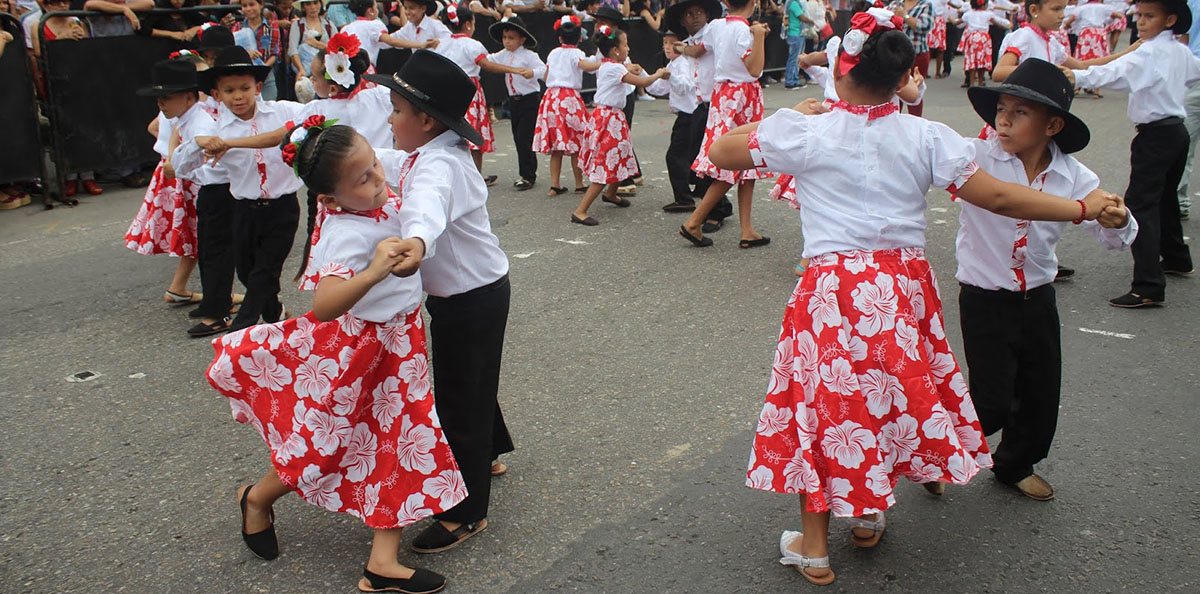
Each country or each region within a country has a costume, a traditional clothing that integrates their folklore, that is, the expression of culture that, of course, also includes stories and legends, music, material culture, oral traditions.
The typical costumes are then influenced by history, geography, ethnic group or climate. Today we travel to South America to ask ourselves, What is the typical costume of Venezuela?
Venezuela
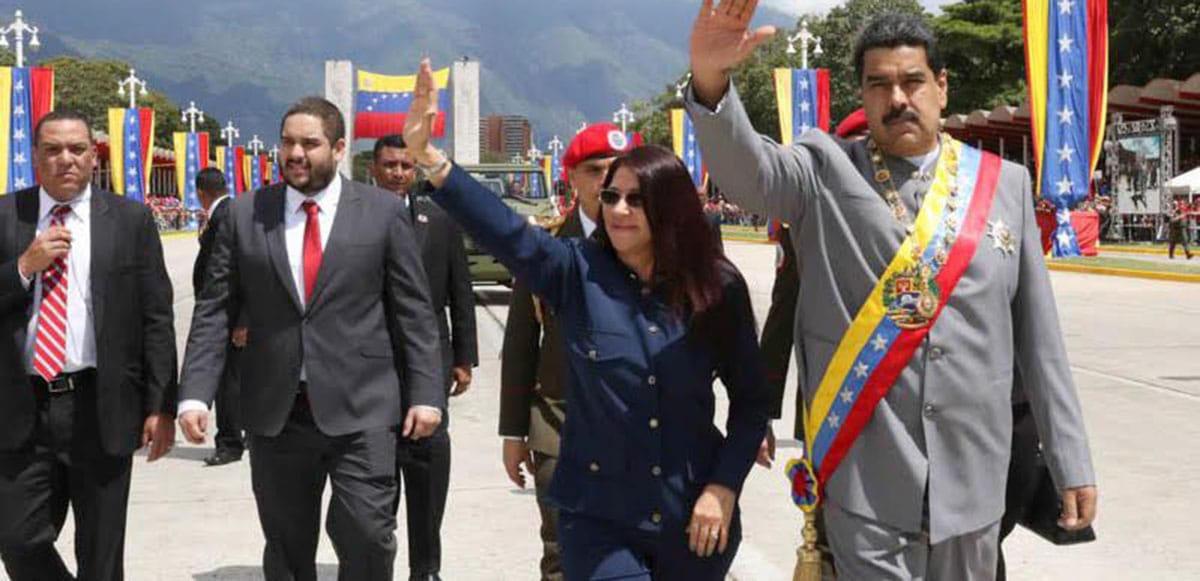
La Bolivarian Republic of Venezuela It is one of the countries that make up South America, with a continental part and a small insular part, on the Caribbean Sea and the Atlantic Ocean. It borders Colombia, Brazil and Guyana.
The territory that Venezuela occupies today was colonized by Spain from 1522, with great resistance from the Amerindian peoples. But in 1811 it was one of the first colonies to claim its independence, something that he would definitely achieve in 1821. A few years later he separated forever from the territory known as Gran Colombia and from then on various political and social upheavals followed, the typical ones in a territory that must be organized.
The 90th century has been plagued by political crises, the 'XNUMXs saw coup attempts, the neoliberal government of Carlos Andrés Pérez and the emergence of the figure of Hugo Chávez hand in hand with the so-called Bolivarian Revolution. The fact that the country has one of the largest oil reserves in the world always places it at the center of the news and pressures from the United States and its allies, producing a very sad social crisis.
The typical costume of Venezuela
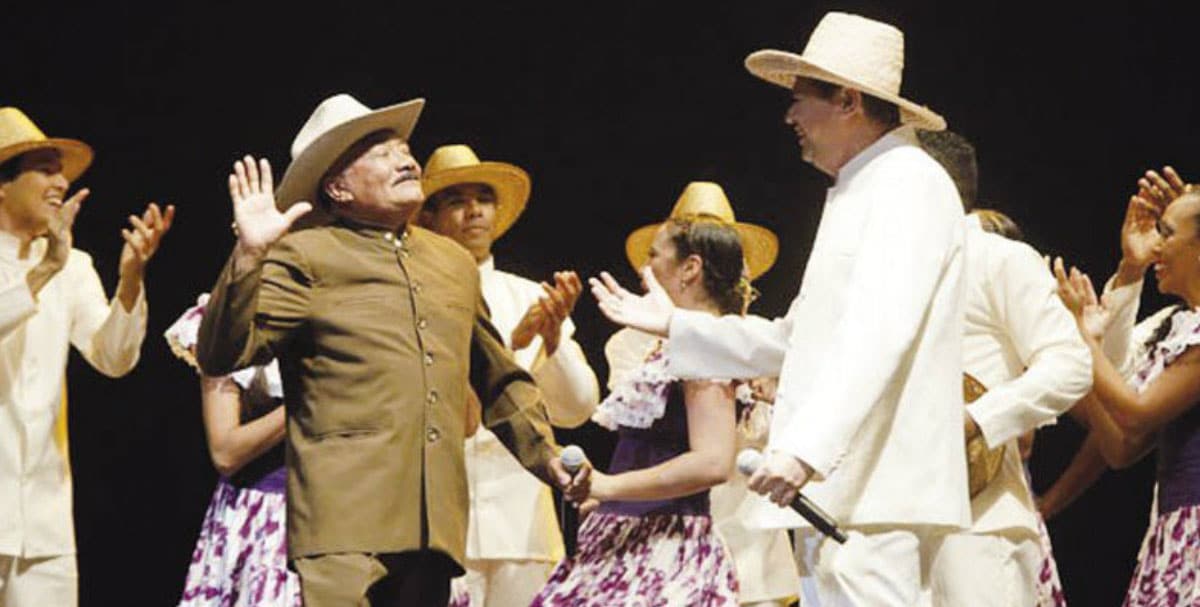
Like Latin America in general, here everything is color, but in truth, although we can speak of a unique typical costume, the truth is that the suit It has variations according to the regions of the country. Venezuela has nine political-administrative regions, the Andes, the Capital, the Central zone, the Llanos, the Central-Western, Zuliana, Northeast, Guyana and Insular.
Each region has its own variation of the typical costume, unless there is a lot of indigenous presence and then the variations are much more marked. Then, the typical costume of Venezuela is the liqui liqui.
In man, the liqui liqui is made up of a long-sleeved jacket, closed collar and tall and straight. It has pockets on the chest and below, at the bottom, and closes with between five and six buttons on the front.
The trousers are straight, made of the same fabric as the upper jacket, so it is usually linen. The most common colors are white and black and it was the common clothing that men used in the field or, cleaner, in the more formal meetings. On their heads the men wear a black hat known as "pelo e 'guama", and the shoes are black boots.
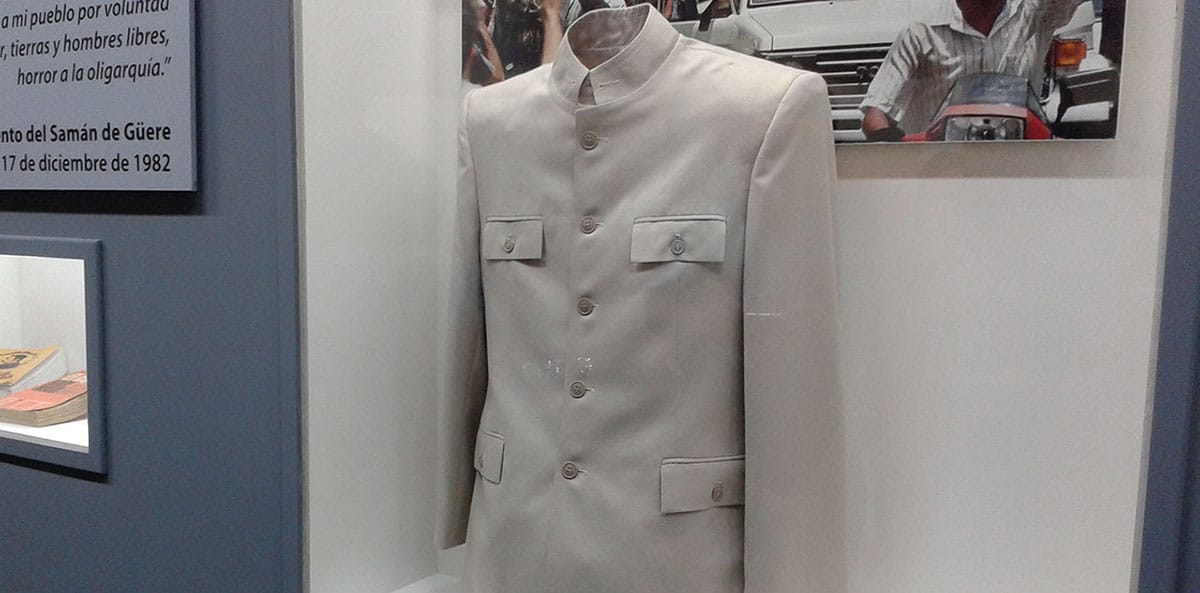
Although the liqui liqui is a masculine garment it is so popular that there is a female version, no longer with pants but with skirts of varied lengths. And yes, sometimes women also wear hats and if not a flower arrangement. But if we talk about typical costume of Venezuela for women so we talk about a dress: a colorful, flowered dress two pieces.
Upstairs the women carry a Printed or solid color, short-sleeved, open-neck blouse and wide, and a similar skirt, which either reaches to the ankles or to the knees. It depends on the region of the country. On their feet women carry you quote, the typical footwear worn by both men and women, or espadrilles. Sometimes shoes with heels, wide or medium are also used. On the head, a bow that holds the hair collected.
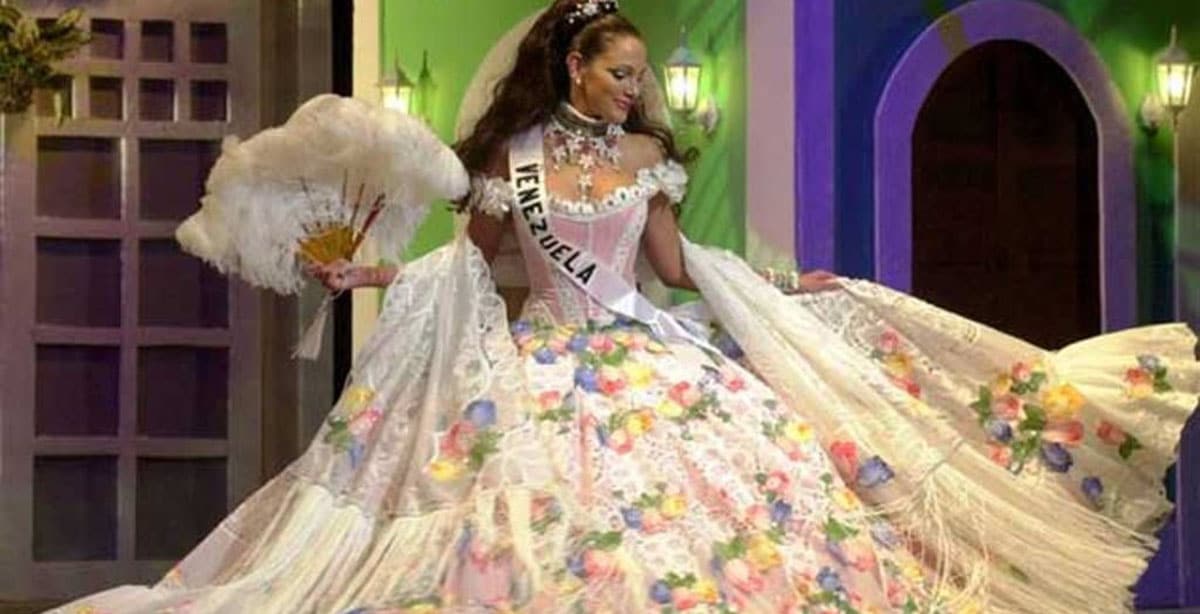
We spoke before that Venezuela has many regions. A) Yes, in the area of the capital, Caracas and the states of Vargas and Miranda, with a large population descended from Spanish settlers and black slaves, the costume assumes other forms.
In the Capital, women wear a traditional costume of «Old lady», a classic lady with a long and wide skirt dress, in the European style, with exquisite fabrics, lace, silks. Below is a crinoline iron or thick fabric petticoats that give flight and volume to the dress. On the head, a hat, on the hands, gloves and a delicate and feminine umbrella.
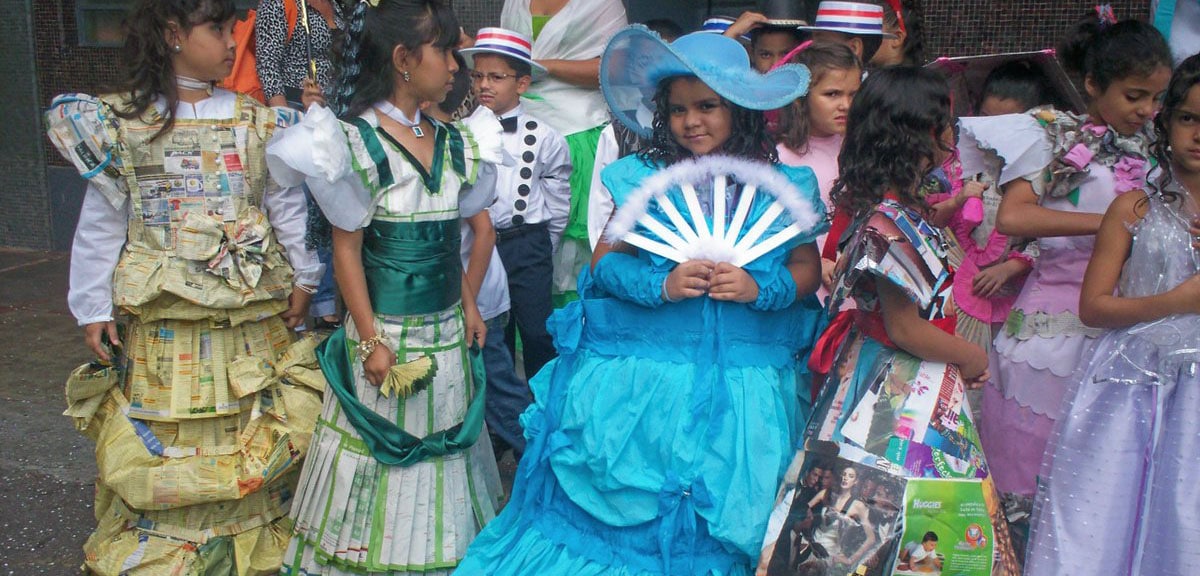
For their part, men wear a set of jacket and trousers that are usually made of light-colored linen or cotton. In other times they wore bowtie or tie and a straw hat, sometimes a cane.
As we move away from the capital the traditions are less formal and that is seen in the variations of the typical costume as well. In Miranda, for example, the women wear wide skirts to the knees, with flower prints, a ruffled blouse and bare shoulders and colored headscarves. The men a set of khaki jacket and trousers, rolled up.
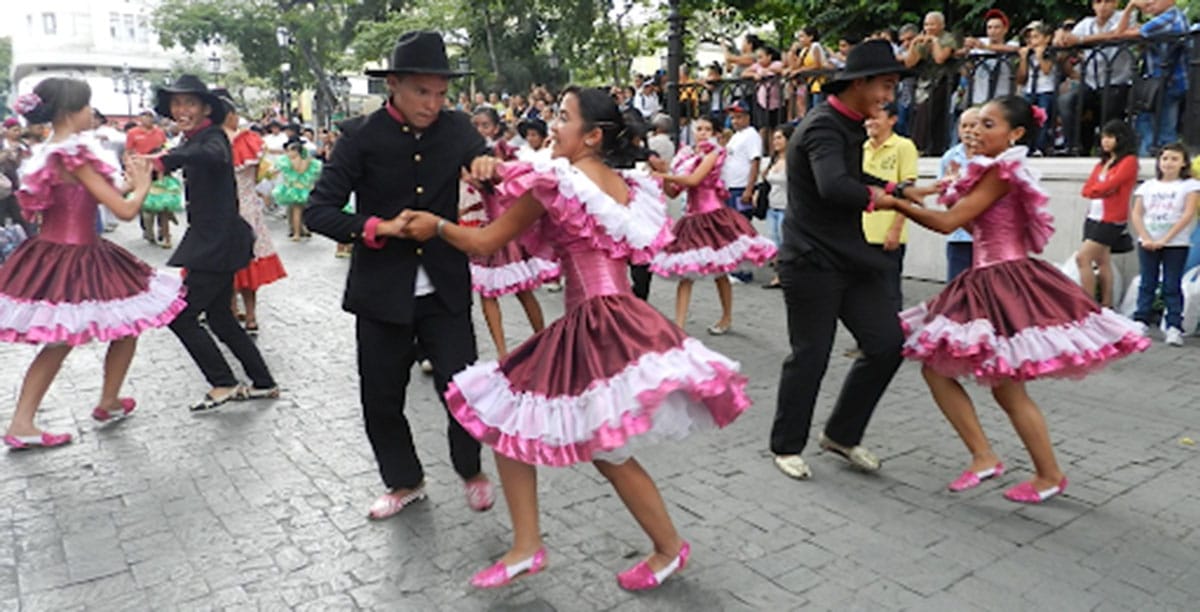
In Vargas, an area of the central coast, as it is used to play drums, female costumes were adapted to their need to move their arms and dance better. Then the blouse is tied at the waist and the skirt loses its flight. For their part, the men wear a white shirt and all go barefoot.
In the Los Llanos region, where are the states of Guárico, Barinas and Apure, the dress of the llanero reigns, very popular nationwide. Namely, it is land of the liqui liqui by excellence. The style and decorations vary according to the occasion, so they can be simpler or more arranged outfits.

The states of Mérida, Táchira and Trujillo make up the Andean region, with colder temperatures. So women carry long, full skirts with warm petticoats, mostly black. The blouse is white, with long sleeves, and on top they wear a linen or cotton jacket. On the head a scarf and on it a hat and vice versa if they work in the fields.
The typical male costume of the Andean region consists of linen or cotton, cream or white trousers and jacket, with a raw sheep wool ruana to protect yourself from the cold. Espadrilles on the feet and straw hat on the head, wide leather belt with pockets, ideal for storing money and sheathing the machete and a bag. All very practical.
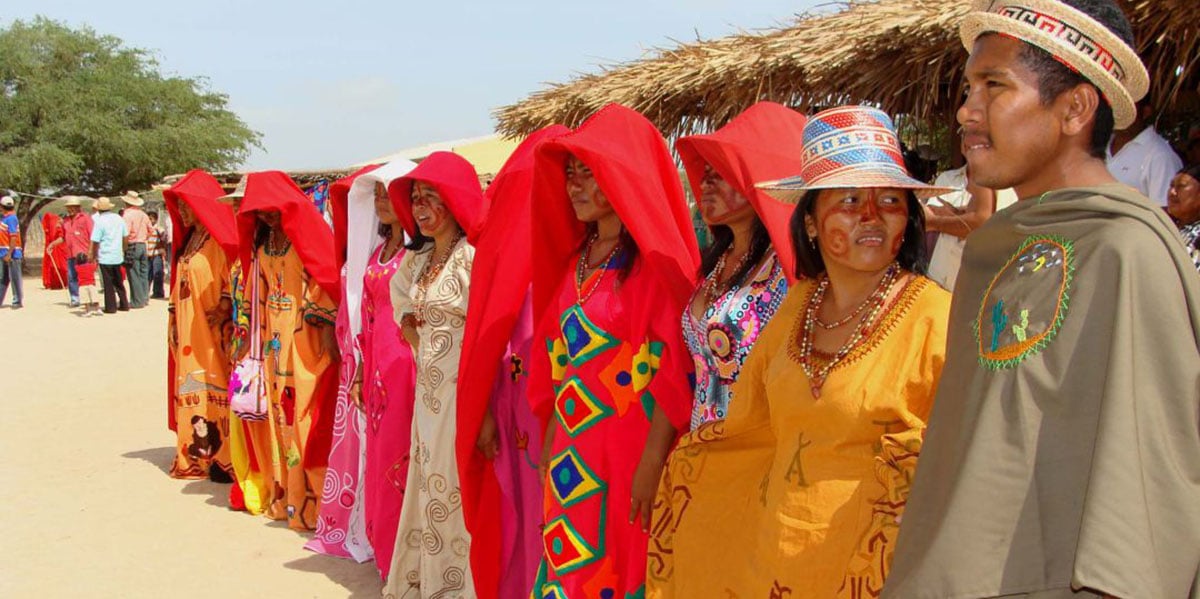
In the state of Zulia, the typical costume has roots of the indigenous people that occupied and still occupies the territory of Guajira, on both sides of the embrasure with Colombia. The women's dress is a guajira blanket, a kind of straight and wide cotton robe, in striking colors and patterns. Sometimes the neck is round, sometimes it is V-shaped, but regardless of that detail, they all have a drawstring at the waist.
On their feet, the women of Zulia wear sandals adorned with multicolored wool ballsYes, the same are the long-handled bags or the ribbons in the hair, covering part of the forehead. They usually wear necklaces, family trinkets that are inherited among the women of the family. And the men?
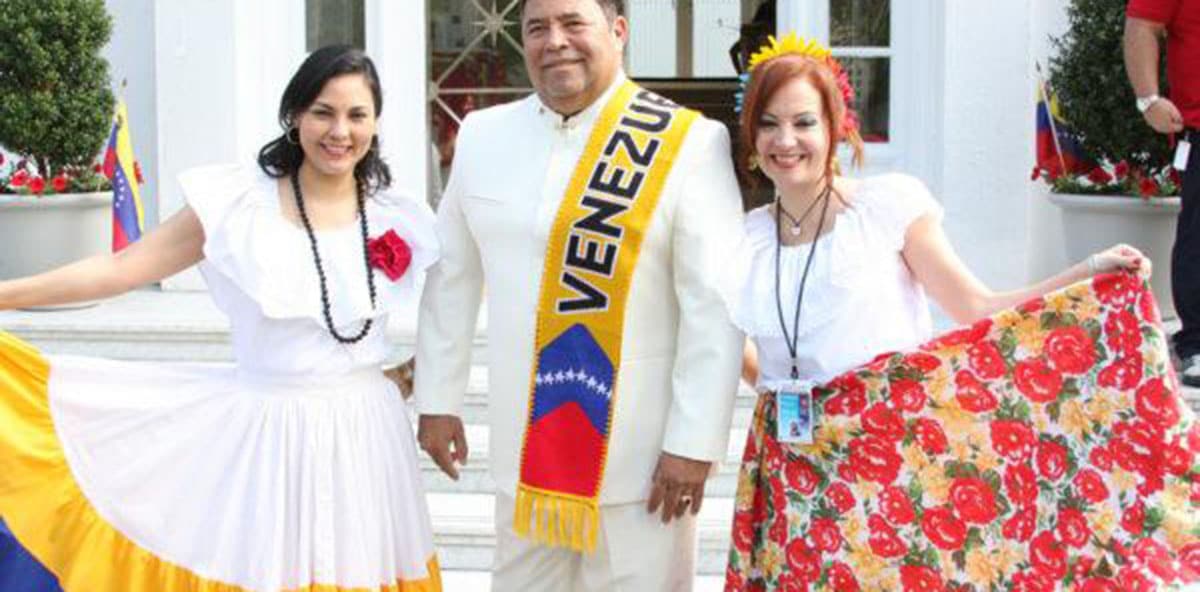
The male suit is not flashy but rather simple: they wear a loincloth to cover the genitals and in the tape that holds it you strain colorful balls. They don't wear a shirt and they go with it naked torso although for some time now some have worn a white flannel. They also carry a woven bag to store food and the knife. On the head a felt hat and on the feet, simple leather sandals. If the event is ceremonial, they can wear a plume.
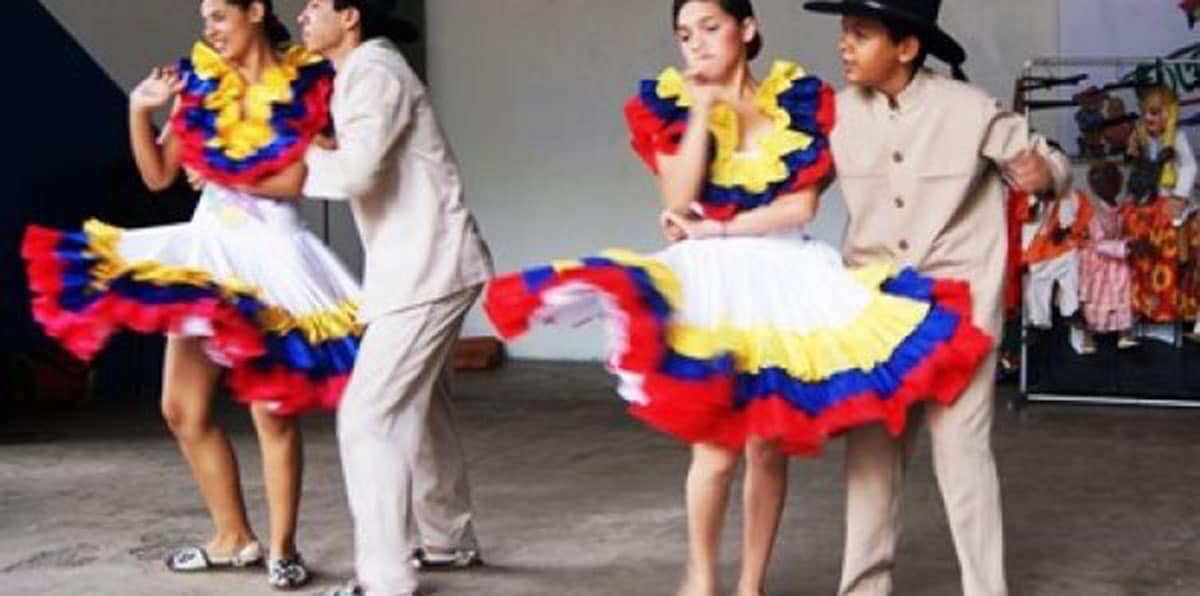
And what about the islands? What is the typical costume of Venezuela in the island region? The women wear a dress with a wide skirt and ruffles, to the ground. They are seven pieces of colored cotton, sometimes flowered, which are sewn one after the other with a lace or satin ribbon. The blouse is 3/4 sleeves with many ribbons as decorations, buttons in the same color as the skirt and a high neck. More ties are in her hair.
Meanwhile the men have white pants to the knee, with a shirt of the same color or red, without a collar. Sometimes the pants can be black or khaki. The hat is made of straw and both men and women wear espadrilles with sole.
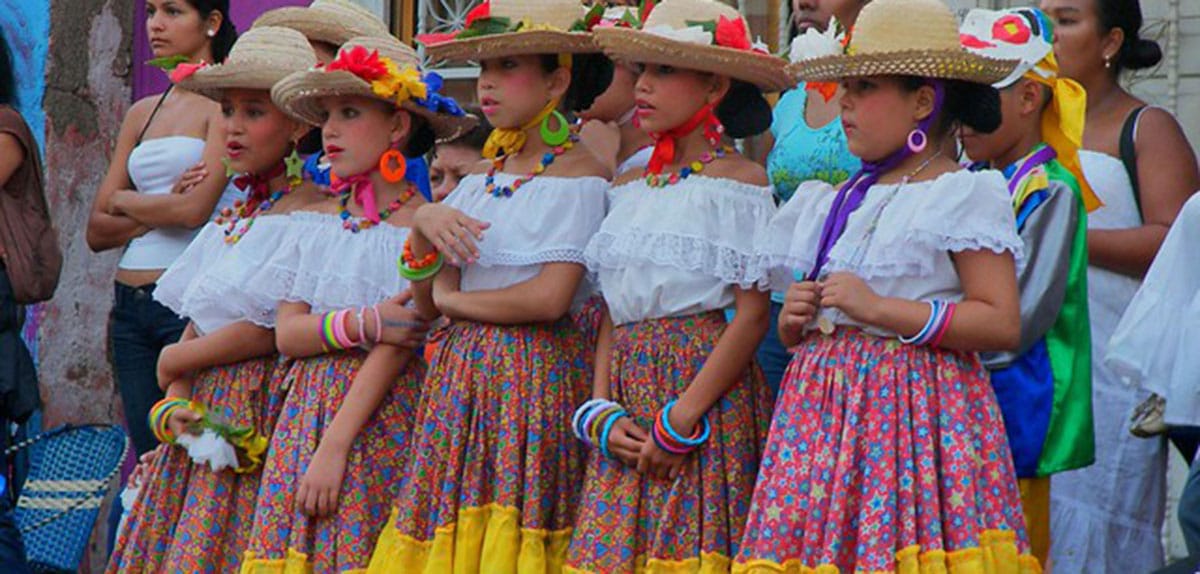
In the Guyana, region that make up the states of Delta Amacuro, Bolívar and Amazonas, the female costume is a skirt of a lot of color and flowers, mid-leg, with a white blouse, necklaces and a belt. For their part, the men wear white trousers and a colored shirt with colorful necklaces too. The men of some tribes go bare-chested.
The states of Yaracuy, Portuguesa, Falcón and Lara make up the Central Western Region, But They do not have a single typical costume but several as each of these states has a strong and personal folklore. Anyway, khaki pants, flowered skirts, colored blouses, hats (sometimes straw, sometimes cane) are repeated. The liqui liqui suit even appears in Yaracuy.
The same thing happens, finally, in the Northeast region and in the central region. Perhaps the differences can only be recognized by Venezuelans themselves, but in general terms, as you will see, the typical costume of Venezuela is full of colors.